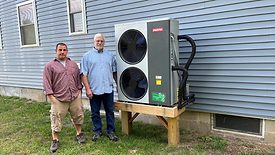Articles by John Siegenthaler, P.E.
Renewable Heating Design | John Siegenthaler
Max COP Tracking
Read More
Hydronics Workshop | John Siegenthaler
A simple, repeatable and scalable approach to hydronic distribution
This one works…
November 30, 2023
Renewable Heating Design | John Siegenthaler
Concepts for varying flow rate in geothermal earth loops
Max COP Tracking — Part 1
November 2, 2023
Hydronics Workshop | John Siegenthaler
What’s possible with hydronics and heat pumps?
Combined elements — part two
November 1, 2023
Hydronics Workshop | John Siegenthaler
Creating a complete system to provide space heating, cooling, DHW and fresh air ventilation
Combined elements
October 2, 2023
Renewable Heating Design | John Siegenthaler
Products that would be welcome additions to the North American hydronics market
Five propositions
September 29, 2023
Renewable Heating Design | John Siegenthaler
Details for piping multiple hydronic heat pumps
Expanded possibilities
August 31, 2023
Hydronics Workshop | John Siegenthaler
There are still viable applications for solar thermal technology
Sōl Survivor
August 31, 2023
Renewable Heating Design | John Siegenthaler
Using “reverser valves” to switch buffer tanks between heating and cooling
Tank flipping
August 1, 2023
Hydronics Workshop | John Siegenthaler
Relays and switches — part two
Building the brains for custom hydronics systems.
August 1, 2023
Keep your content unclogged with our newsletters!
Stay in the know on the latest plumbing & piping industry trends.
JOIN TODAY!Copyright ©2025. All Rights Reserved BNP Media.
Design, CMS, Hosting & Web Development :: ePublishing











